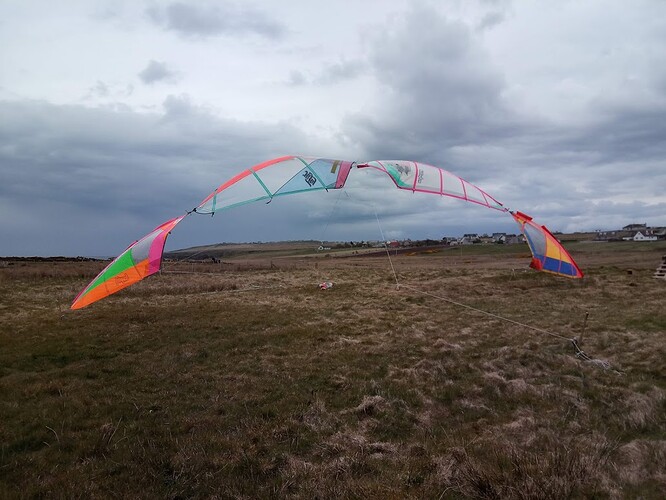Reversible kites are very interesting.
The main advantages I see from them is simplistic operation allowing array deployment.
The kite attitude depicted in this diagram seems extreme. Where the kite is able to punch into the wind sideways so far.
From what I’ve experienced of motion reversing in soft kites or over kite networks , these tend to be soft across their span, e.g. kites which rely on pressure for form.
A strong reversal from a single point with short lines is hard to control and won’t provide a lot of power. The soft span is prone to collapse in this configuration.
I can agree that multiple anchors is more infrastructure, but there is no need for a circular rail.
For example the 3r patterns described by
https://iopscience.iop.org/article/10.1088/1742-6596/1037/4/042023
Assessment of an Alternative Concept for a High-Altitude Wind-Power Generator
Max Langbein1, Maja Ruby1 and Nicolas Gauger1
Describes how a spread 3 tether motion suited to a reversing kite motion can be used in yoyo style generation whilst also providing for a way to keep the kite pumped flying in calm.
The flat sheets of these sails tied as a kite would thrash and gallop wildly in a strong wind even despite spread loadpath rigging along the span. More crosslines between panels helps but it’s a lot to control
